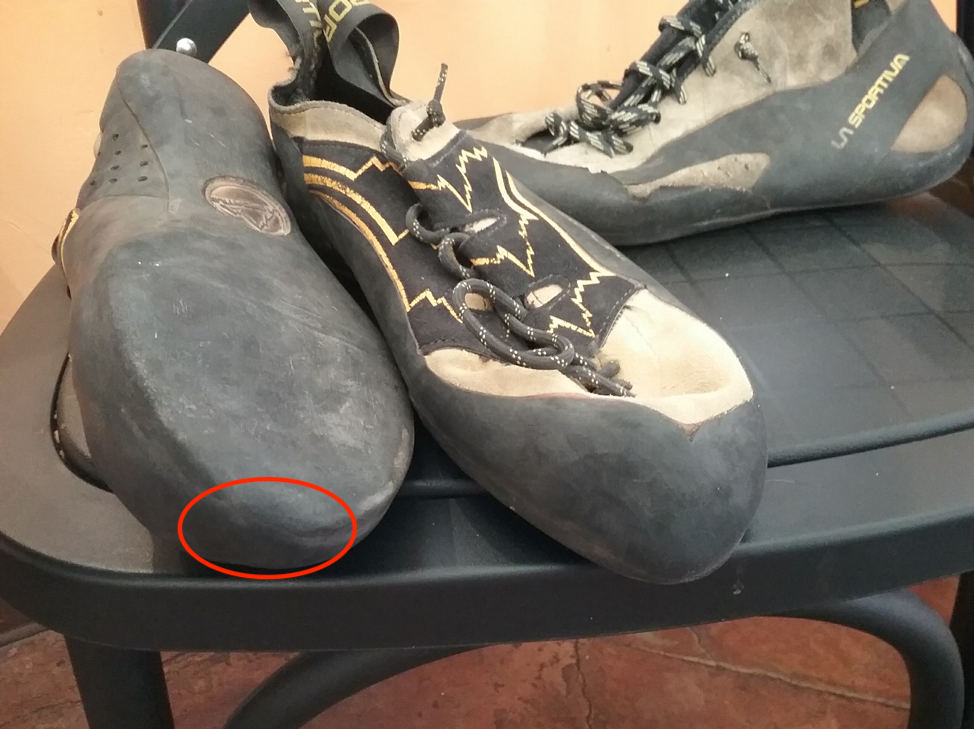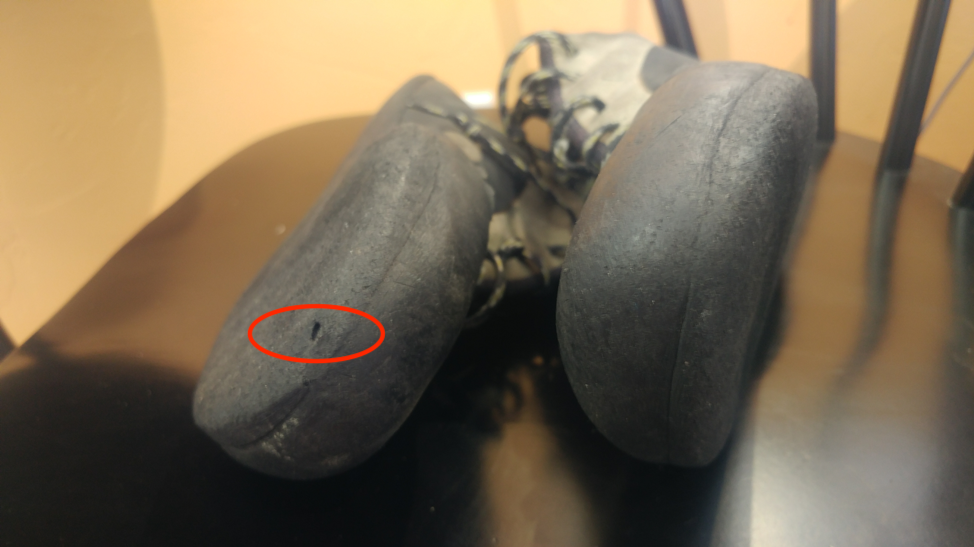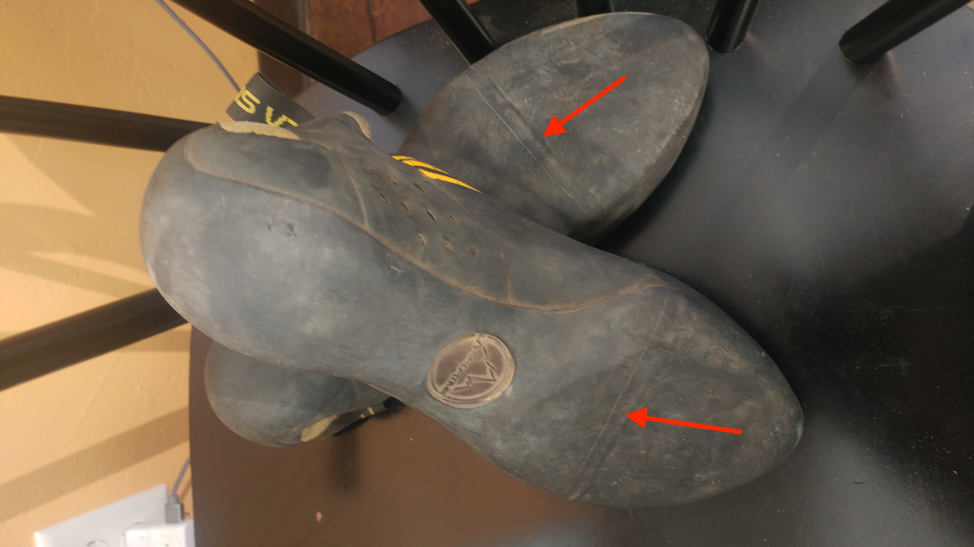There’s a lot of mixed information out there about resoling climbing shoes.
Some of my closest friends insist that resoled shoes lose their integrity and don’t climb as well, so they wear their shoes until they blow out completely and then throw them away.
I have other friends, though, that have had their shoes resoled as many as six times, and while the shoes probably smell like rotting cadavers at that point, they don’t notice any significant difference in the way the shoe climbs.
A new pair of shoes can put you out anywhere from £50 / $80 to £140 / $180 and if you’re climbing almost every day, as most obsessive climbers probably are, your shoes aren’t going to last forever.
When it comes to resoling, the key is doing your research and knowing when it’s time to resole your shoes. Leave it too late and you'll find yourself paying extra for the repair work, or worse having to replace your shoes entirely.
Read on for the answers to some common questions about resoling, and to learn how to get the most out of your shoes, reduce waste, and keep your climbing costs to a minimum.
How do I know when my climbing shoes need to be resoled?
If you look at a fresh pair of climbing shoes, you’ll notice that there are two distinct sections of rubber: The rand and the sole.
The rand is the rubber that wraps around the sides of the shoe and over the top of the toe. The sole is the stiffer piece of rubber that covers the bottom of the shoe, and on most shoes you can see a distinct line where the sole meets the rand.
This is the line you want to keep an eye on as you start to wear out your shoes.
The ideal time to send your shoes in for a resole is when you’ve worn through the sole, or almost worn through the sole but haven’t started to wear out the rand yet.
The sole of the shoe is generally stiffer and thicker than the rand. Once you wear through it completely and expose the rand, your shoes are at serious risk of blowing out entirely as the rand is thinner and softer than the sole and not meant to be climbed on.
You can also do structural damage to the shoe by climbing on the rand, which might explain why some people notice that their shoes don’t perform as well after a resole.
Most resolers do offer rand repair or toe cap replacement as a service, but it’s more difficult than a standard resole, it costs more (usually about £10 / $10 extra per rand), and it compromises the shoe’s performance so if you want to get the most out of your resole, make sure you send your shoes in before you start wearing out the rand.
There is still a good amount of rubber left on these La Sportiva Katanas but you can see where the toe is starting to wear down a little.
Is a resole worth the cost?
Depending on where you live, a standard half-sole resole (which replaces the front half of the sole, from just in front of the arch to the toe) should cost somewhere between £30 / $30 and £40 / $40. If you live near a resoler and can drop your shoes off, this is a great deal, and in my opinion, totally worth the cost.
If you have to ship your shoes, that can add anywhere from £5 / $7 to £15 / $20 to your total cost.
If you’re climbing in TC Pros (MSRP £130 / $185) or a similarly high-end pair of climbing shoes, then a £40 / $60 resole is still pretty cost-effective.
If you’ve damaged one or both of the rands and you have to ship your shoes, though, your resole cost will be somewhere in the £60 / $80 range, which is still better than £130 / $185 assuming the shoe’s performance isn’t compromised, but is it worth it if you’re not sure that the shoe will perform as well in its second life?
That depends entirely on your situation.
If you’re planning to climb hard routes near your physical limit, where high shoe performance and the ability to stand on anything is really important to you, then maybe a resole isn’t worth it.
But if you’re just planning to train at the gym most of the time or climb a lot of moderate routes, or even if you plan to climb hard but don’t think your shoes will change your climbing game too much, then even an £60 / $80 resole is still probably totally worth it for you.
These TC Pros look like they are still mostly in great shape but that little hole in the sole, as well as the fact that the sole is almost worn through to the rand, means it’s time for a resole
How long does a resole take?
Most resolers have a turnaround time of 3-8 weeks.
Turnaround time is one of the biggest problem that prevents people from resoling their shoes. How can you possibly go two months without your climbing shoes? If you’re committed to climbing for the long haul, then your best option is probably to buy a second pair of shoes so that you can cycle through your shoes as you resole them.
The key to making this work is sending in your old shoes as soon as you buy the second pair.
Many a climber have been known to buy a second pair with the intention of resoling their old shoes, only to forget all about their worn-out shoes until months later when the second pair blows out too, and then you’re worse off than you were before, with two pairs of blown out shoes and nothing to climb in.
If, however, you’re diligent about resoling each pair of shoes before you hit the rand, and doing it as soon as you switch to your other pair of shoes, it’s possible to make two pairs of climbing shoes last for years!
How many times can you resole your climbing shoes?
This depends mostly on how well you take care of your shoes and how diligent you are about resoling them on time.
If you always resole your shoes before hitting the rand, you should be able to resole your shoes at least three times assuming the upper is still in good shape. Many resolers also offer minor repairs to the upper and/or stitching, so they might be able to fix your shoes even if the upper is slightly damaged.
The number of resoles possible can also depend on the style of shoe you wear.
If you wear really stiff, downturned shoes, then it might be hard to maintain the shape of the shoe through multiple resoles, but with proper care and a good resoler it’s not impossible to get multiple quality resoles even on aggressive shoes.
In this photo you can see the line between the toe and the arch where the resoler replaced the rubber.
What’s the best rubber for resoling climbing shoes?
Like many of the other questions on this list, this depends mostly on personal preference. Most resolers have a variety of different types of rubber on hand, and if you don’t specify which one you want, they’ll usually either use the same one that came on the shoe or if they don’t have that they’ll use the closest match they have.
If you want your shoe to perform as much as possible like it did before your resole, then your best bet is to ask your resoler to resole it with the same type of rubber that came on the shoe.
General consensus these days is that 5.10’s Stealth Rubber is the stickiest rubber on the market, so many people choose to have their shoes resoled with stealth rubber instead of with whatever type of rubber came on the shoe.
Stealth Rubber comes in a variety of stiffnesses: MI6 is the softest and stickiest, C4 is pretty soft, sticky, and very popular, and Onyxx is slightly more stiff but still very sticky.
It’s important to note that the softer rubbers do tend to wear out more quickly than harder rubbers, but most people tend to choose Stealth rubber anyways for the performance.
Many resolers also allow you to choose the thickness of rubber that you want on the sole, and just like rubber type this also depends on personal preference. The standard sole thickness is usually somewhere around 3.5 mm, but often resolers will offer a 4.3 mm sole or a 5.3 mm sole as well.
A thicker sole will last you longer, but it will also slightly alter the toe profile of the shoe, making it a little more difficult to shove the toe box into small cracks and making the toe area a little less sensitive.
What can I do to make my shoes last longer?
The best way to make your shoes last is to take them off when you’re not climbing. Walking around in your shoes can compromise the shape and stiffness of the shoe, especially in aggressive shoes. It also wears out the sole more quickly and can stretch out the upper or affect the shape of the shoe due to excessive sweating or swelling of the feet.
You can also extend the life of your shoes by keeping them clean. Keep your shoe rubber free of dirt and chalk by washing the rubber with warm water and a mild soap every once in a while.
You can also try scrubbing the rubber clean with a wire brush and then wiping it off with alcohol or vinegar before climbing. This will keep dirt from damaging the rubber while you climb, and it will also make your shoes less slippery, which will make you climb better while at the same time saving your rubber from big foot slips.
Finally, make sure you dry out your shoes after climbing to keep them clean and stink-free. While smell doesn’t affect the shoe’s performance, it might affect how many times you want to have them resoled, so keeping them fresh as long as possible will save you money in the long run.
Check out our other article on keeping your climbing shoes smelling fresh as the day you bought them.




